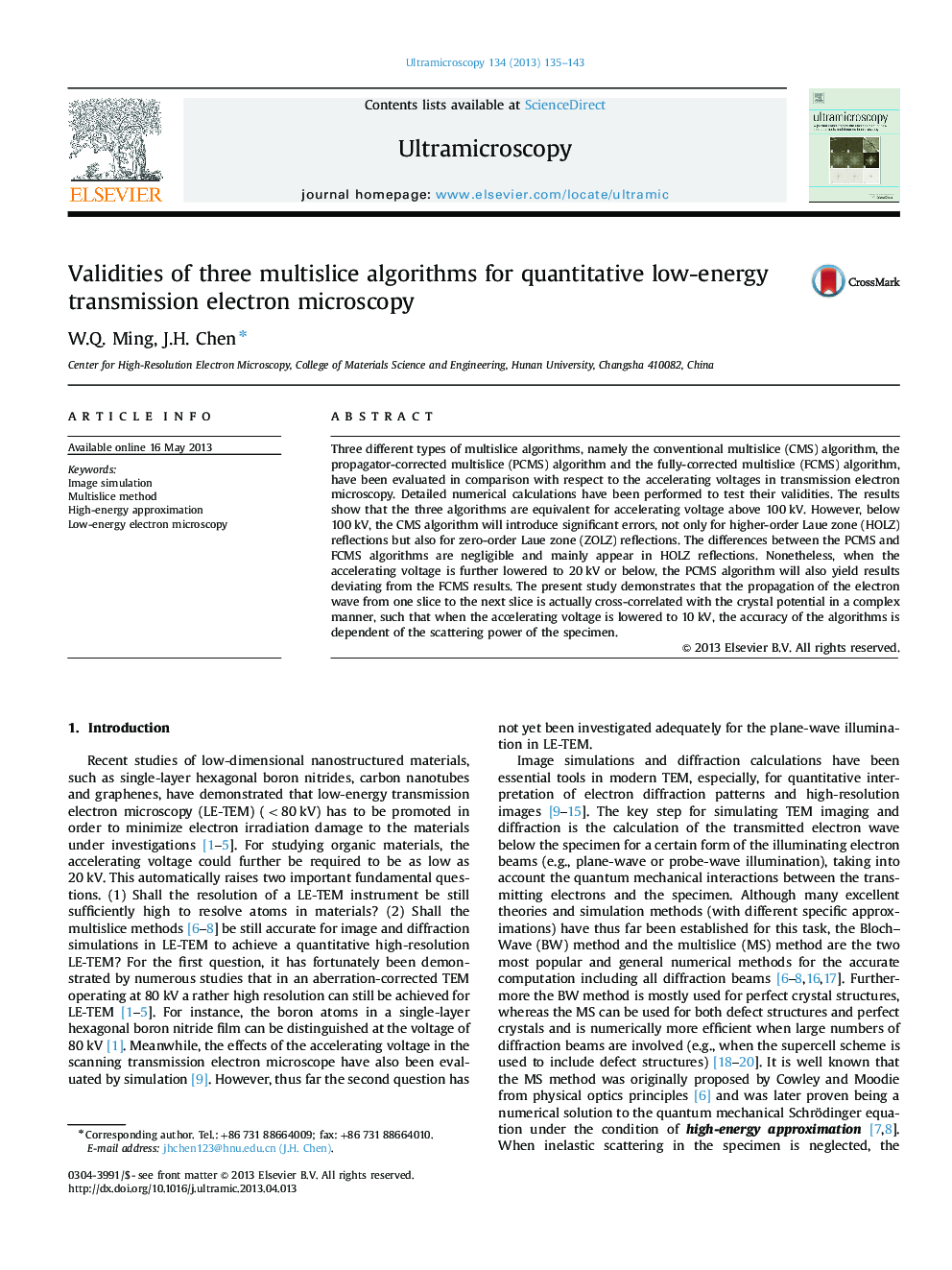| Article ID | Journal | Published Year | Pages | File Type |
|---|---|---|---|---|
| 8038475 | Ultramicroscopy | 2013 | 9 Pages |
Abstract
Three different types of multislice algorithms, namely the conventional multislice (CMS) algorithm, the propagator-corrected multislice (PCMS) algorithm and the fully-corrected multislice (FCMS) algorithm, have been evaluated in comparison with respect to the accelerating voltages in transmission electron microscopy. Detailed numerical calculations have been performed to test their validities. The results show that the three algorithms are equivalent for accelerating voltage above 100Â kV. However, below 100Â kV, the CMS algorithm will introduce significant errors, not only for higher-order Laue zone (HOLZ) reflections but also for zero-order Laue zone (ZOLZ) reflections. The differences between the PCMS and FCMS algorithms are negligible and mainly appear in HOLZ reflections. Nonetheless, when the accelerating voltage is further lowered to 20Â kV or below, the PCMS algorithm will also yield results deviating from the FCMS results. The present study demonstrates that the propagation of the electron wave from one slice to the next slice is actually cross-correlated with the crystal potential in a complex manner, such that when the accelerating voltage is lowered to 10Â kV, the accuracy of the algorithms is dependent of the scattering power of the specimen.
Related Topics
Physical Sciences and Engineering
Materials Science
Nanotechnology
Authors
W.Q. Ming, J.H. Chen,
